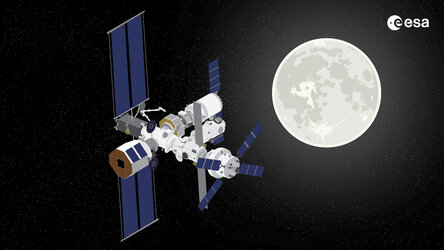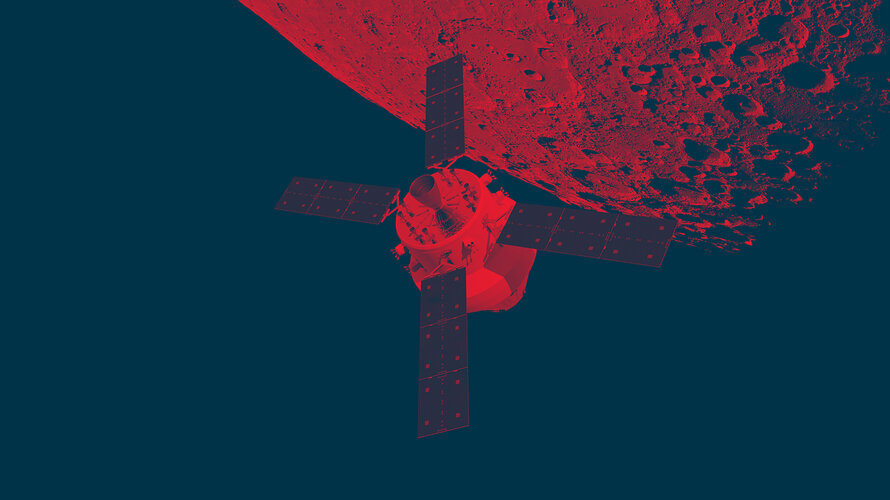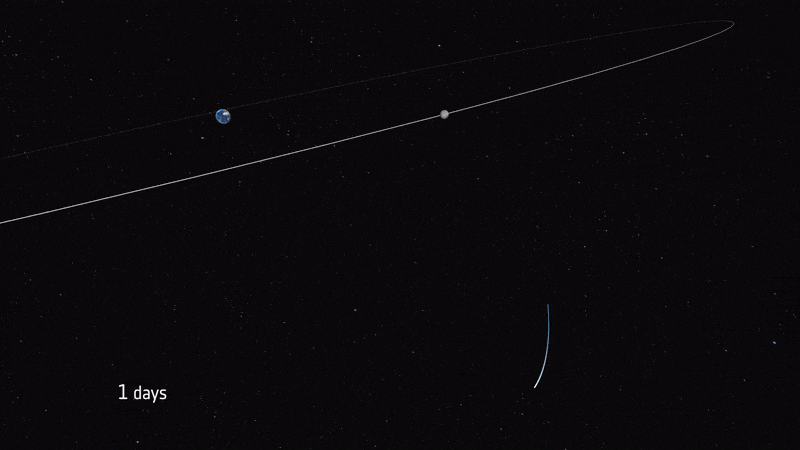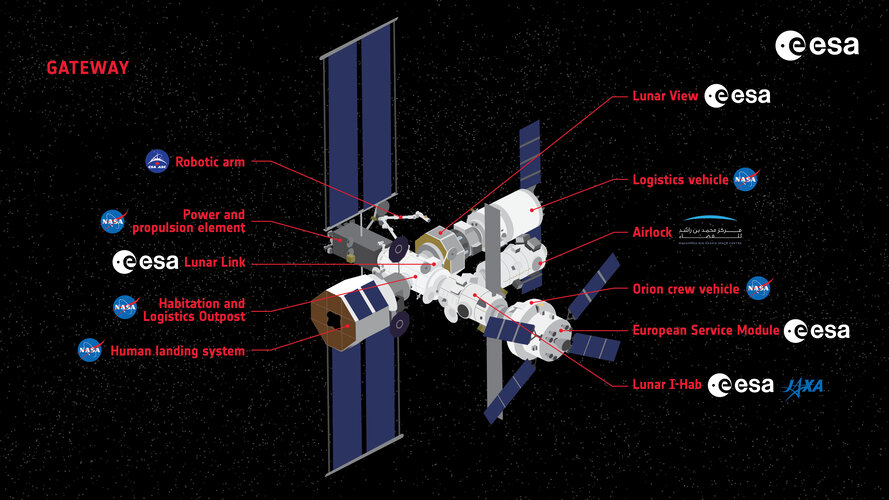Gateway: Lunar I-Hab
Lunar I-Hab is an ESA habitation module for the lunar Gateway, the new international space station that will orbit the Moon as part of the Artemis programme.
Lunar I-Hab is a pressurised module that will provide living quarters for astronauts visiting the Gateway, including multiple docking ports for berthing vehicles as well as other modules.

The habitation module will offer around 10 cubic metres of living space, or the volume inside a medium campervan. Together with NASA’s Habitation and Logistics Outpost (HALO) module, there will be enough room for up to four astronauts staying up to 90 days at a time on the lunar station. Lunar I-Hab will be the living, sleeping and dining room for the astronauts, as well as allowing experiments to run both inside and outside the module.
Lunar I-Hab will become the main entrance port to the Gateway, with two docking ports used to connect it to the station and two other ports available for visiting vehicles. The habitat will also serve the overall Gateway station with its thermal control system and its exterior will include attachment points for the Canadarm3 robotic arm.

The Artemis IV mission will bring Lunar I-Hab to the Gateway, propelled towards the station by the Orion spacecraft and its powerhouse, the European Service Module. There, it will meet NASA’s power and propulsion module (PPE) and HALO, on which Lunar Link will be attached. This mission will be the first time a crew goes to the Gateway.

Lunar I-Hab is provided by ESA, with important contributions from the Japanese Aerospace Exploration Agency (JAXA), which is providing the environmental control and life support system as well as the batteries. ESA has selected Thales Alenia Space in Italy as the main contractor to develop the Lunar I-Hab module. At their premises in Turin, the primary structure is under production with a mock-up used to test that the module is safe and accessible for Gateway astronauts. Later, the module will be assembled and undergo environmental test and verification campaigns before being handed over to NASA ahead of the Artemis IV launch.
Quick facts

Launch: Artemis IV 2028
Habitable volume: 10 m3
Crew systems: galley for dining, private areas for sleeping, exercise and medical areas
Launch mass: 10 tonnes
Structure: aluminium
Docking ports: two allocated for visiting vehicles and two to connect to NASA’s HALO and the airlock provided by the Emirati space agency MBRSC
Thermal control system: two, 12-metre-long deployable radiator wings
Note: Lunar I-Hab was previously known as I-Hab.















 Germany
Germany
 Austria
Austria
 Belgium
Belgium
 Denmark
Denmark
 Spain
Spain
 Estonia
Estonia
 Finland
Finland
 France
France
 Greece
Greece
 Hungary
Hungary
 Ireland
Ireland
 Italy
Italy
 Luxembourg
Luxembourg
 Norway
Norway
 The Netherlands
The Netherlands
 Poland
Poland
 Portugal
Portugal
 Czechia
Czechia
 Romania
Romania
 United Kingdom
United Kingdom
 Slovenia
Slovenia
 Sweden
Sweden
 Switzerland
Switzerland

































